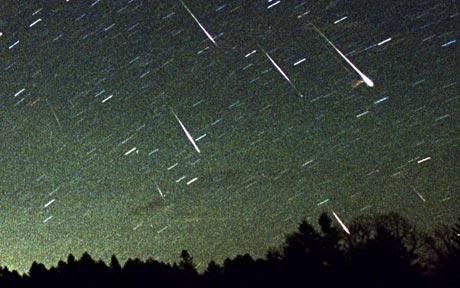 |
| Photo: Leonids in Rikubetsu, Japan. Credit: REUTERS |
There will be full Moon, but it will be quite light, which makes you can not see this event in all splendor, and that is why we can not get but a shooting star per minute. However, the event is of great interest to scientists because it will help you understand how meteor showers form and evolve.
In the past, Draconids appeared in 1933 and 1946, when they fell even up to several thousand meteors per hour. This year we will not expect a meteor storm too high, reaching only 40-50 maximum meteors / hour.
Their brightness will be quite big at first, but later will gradual decrease to average levels. In Eastern Europe, will begin at 7:24 p.m. and will end at 23:00 p.m.
We are lucky as we will be in night and Draconids can be seen, the Americas not being able to enjoy this event because there will be daytime.
The effects of Draconids on artificial satellites:
Draconids can be a danger to near Earth satellites, although it still has not been demonstrated so far during other "showers" of falling stars.
It still showed some anomalies that are produced by these meteor showers caused on satellites, such as Olympus and Landsat, anomalies caused by electrostatic discharge produced by meteoroid impacts.




 Wednesday, October 05, 2011
Wednesday, October 05, 2011
 Unknown
Unknown

 Posted in:
Posted in: 


0 comments:
Post a Comment